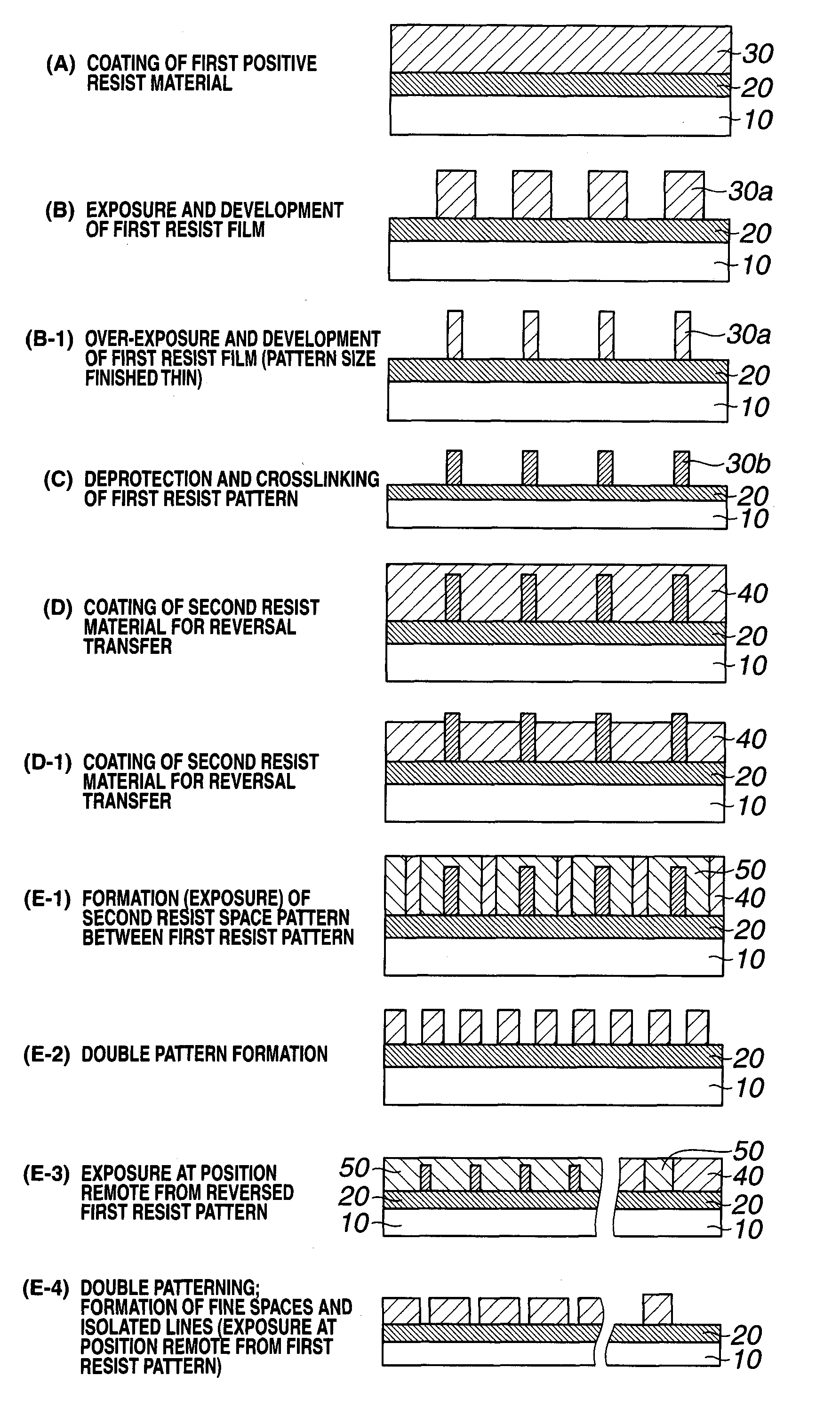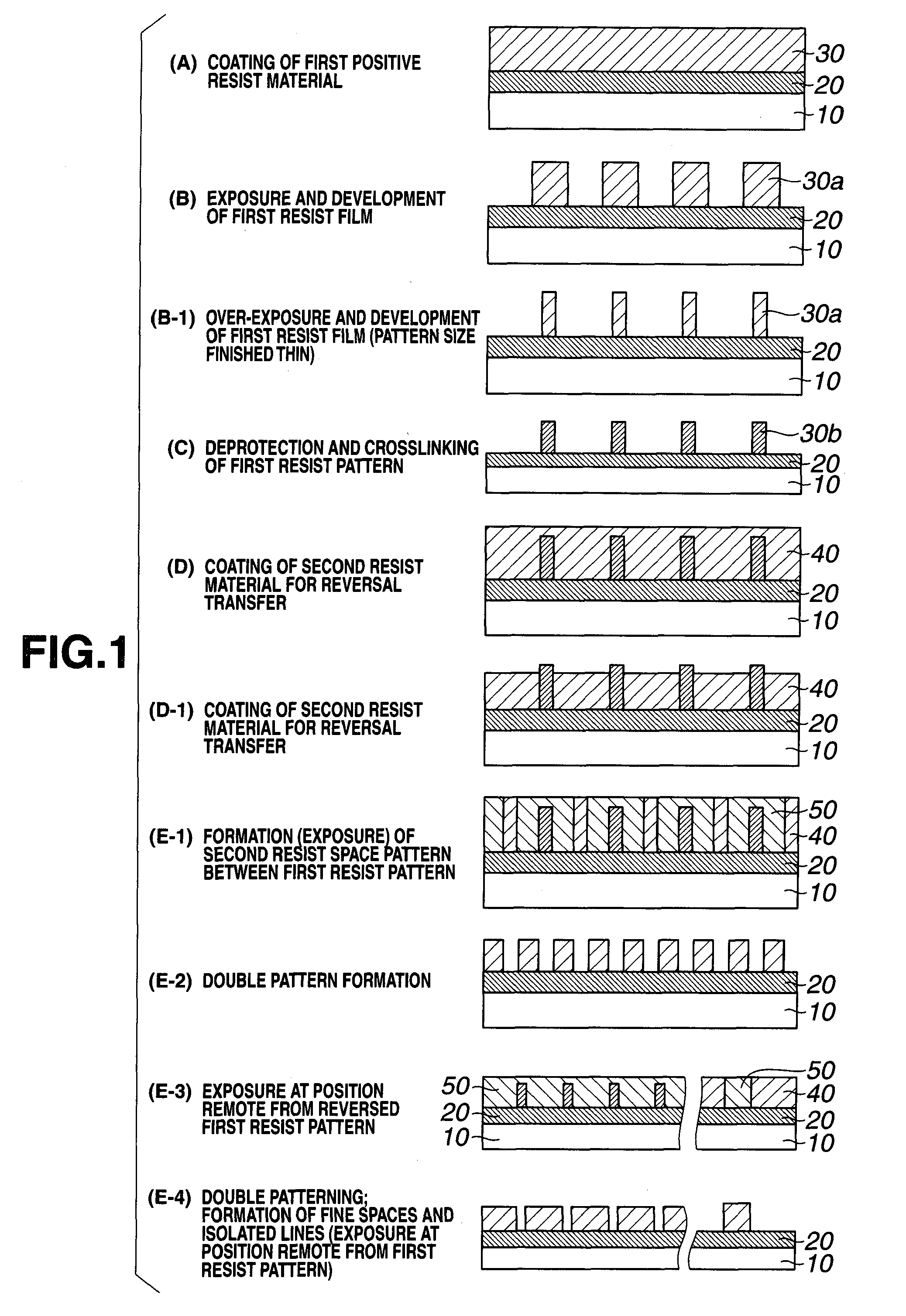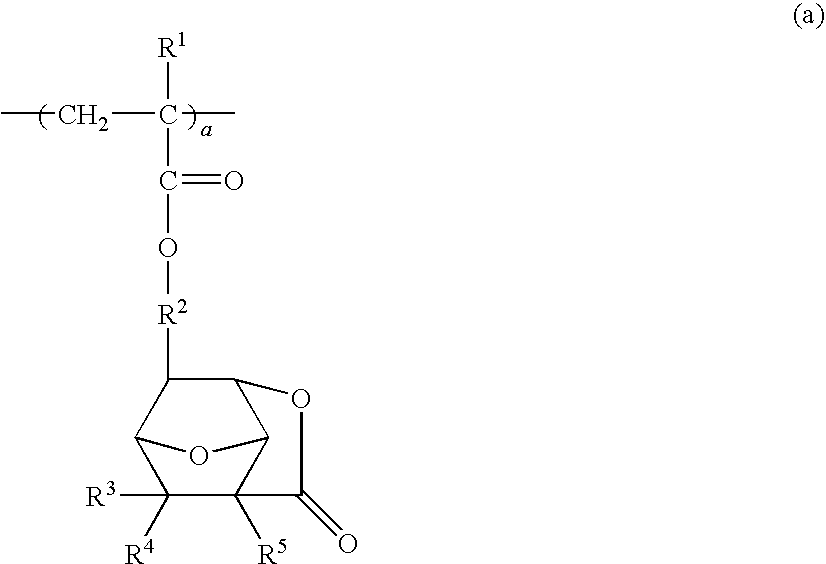Double patterning process
a patterning process and patterning technology, applied in the field of double patterning process, can solve the problems of negative resist material, complex process, and difficult to achieve, and achieve the effect of simple steps and high accuracy
- Summary
- Abstract
- Description
- Claims
- Application Information
AI Technical Summary
Benefits of technology
Problems solved by technology
Method used
Image
Examples
synthesis example 1
[0632]Polymers for use in first resist compositions for reversal and second resist compositions subject to reversal transfer of first resist film were prepared by combining various monomers, effecting copolymerization reaction in tetrahydrofuran solvent, crystallization in methanol, repeatedly washing with hexane, isolation, and drying. The resulting polymers (Resist Polymers 1 to 10 and Comparative Resist Polymers 11 to 13) had the composition shown below. Notably, a phenol group on a monomer was substituted by an acetoxy group, which was converted back to a phenol group by alkaline hydrolysis after polymerization. The composition of each polymer was analyzed by 1H-NMR, and the Mw and Mw / Mn determined by GPC.
[0633](polymer for use in first resist composition)[0634]Mw=8,300[0635]Mw / Mn=1.73
Resist Polymer 2
[0636](polymer for use in first resist composition)[0637]Mw=7,300[0638]Mw / Mn=1.67
Resist Polymer 3
[0639](polymer for use in first resist composition)[0640]Mw=7,700...
synthesis example 2
[0673]A 200-ml four-neck flask equipped with a stirrer, reflux condenser, dropping funnel, and thermometer was charged with 0.2 g of acetic acid, 20 g of water and 20 g of ethanol and kept at 30° C. To the flask, a solution of 9.1 g (30 mmol) of triethoxysilane compound A and 31.8 g (70 mmol) of triethoxysilane compound B in 40 g of ethanol was added dropwise over 3 hours.
[0674]The reaction mixture was aged at 30° C. for a further 20 hours, diluted with methyl isobutyl ketone, repeatedly washed with water until the organic layer became neutral, and concentrated, yielding 27.6 g of an oligomer.
[0675]Using 50 g of toluene, the oligomer was transferred into a 100-ml three-neck flask equipped with a stirrer, reflux condenser, and thermometer. Then 56 mg of potassium hydroxide was added to the solution, which was heated under reflux for 20 hours. The reaction solution was cooled, diluted with methyl isobutyl ketone, repeatedly washed with water until the organic layer became neutral, and...
PUM
 Login to View More
Login to View More Abstract
Description
Claims
Application Information
 Login to View More
Login to View More - R&D
- Intellectual Property
- Life Sciences
- Materials
- Tech Scout
- Unparalleled Data Quality
- Higher Quality Content
- 60% Fewer Hallucinations
Browse by: Latest US Patents, China's latest patents, Technical Efficacy Thesaurus, Application Domain, Technology Topic, Popular Technical Reports.
© 2025 PatSnap. All rights reserved.Legal|Privacy policy|Modern Slavery Act Transparency Statement|Sitemap|About US| Contact US: help@patsnap.com



